Varahi Temple, Chaurasi
Varahi, is one of the Matrikas, a group of seven or eight mother goddesses in the Hindu religion. With the head of a sow, Varahi is the shakti (feminine energy, or sometimes, consort) of Varaha, the boar Avatar of the god Vishnu. In Nepal, she is called Barahi.
Varahi is worshipped by all the three major schools of Hinduism: Shaktism(goddess worship); Shaivism (followers of the god Shiva); and Vaishnavism(devotion to Vishnu). She is usually worshipped at night, and according to secretive Vamamarga Tantric practices. The Buddhist goddesses Vajravārāhīand Marichi are believed to have their origins in the Hindu goddess Varahi.
This temple was built in honour of Varahi in the first quarter of 10th century A.D. during Somavamsi rule.
The temple is east facing and built with Sand stone. The area dimension (L x B x H) of the temple is 15.84 m x 8.23 m x 8.40 m. Varahi is believed to be the Sakti of Varaha. In the Tantric text ‘Varahi Tantra’ mention has been made of five forms of Varahi i.e., Svapna Varahi, canda Varahi, Mahi Varahi (Bhairavi), Krcca Varahi and Matsya Varahi.
The description of Matsya Varahi closely corresponds to the image enshrined in he temple. She has two arms and she is shown seated in Lalitasana on a pedestal. Following the iconographic canons, the image bears the face of a boar and body of a divine woman. Her right hand holds a fish while the left hand holds a Kapala. She has kept her right foot on her Vahana buffalo which is seated on the pedestal at the bottom. Varahi is represented with a third eye on her forehead which is not clearly visible at present. Her hair is decorated in the form of spiral coils.” The beauty of this image lies in her big belly to indicate her as holding the universe in her womb (Bhugarbha Paranesvari Jagaddhatri).
The Pattajali window on the side walls of the temple.
In the niche of the south wall Ganesa, the deity of the learning has been represented, while the niche of the west wall protects the image of Surya, the deity of light. The niche of the north wall is empty. Most probably, it contained the image of some tantric deity i.e Bhairava. Lord Ganesa belongs to the divine family of Goddess Durga and Varahi is considered to be a form of Durga. In Durga Saptasati, Varahi is evoked for bestowing long life. So Ganesa’s representation as parsvadevata is obvious.
For the first time, here I saw Sun God or Suryadeva as a Parsvadevta. The oldest surviving Vedic hymns, such as the hymn 1.115 of the Rigveda, mention Sūrya with particular reverence for the “rising sun” and its symbolism as dispeller of darkness, one who empowers knowledge, the good and all life. However, the usage is context specific. In some hymns, the word Surya simply means sun as an inanimate object, a stone or a gem in the sky (Rigvedic hymns 5.47, 6.51 and 7.63); while in others it refers to a personified deity.
Surya is celebrated as a deity in Buddhist artwork, such as the ancient works attributed to Ashoka. For example, Surya appears in Mahabodhi temple in Bodhgaya, riding in a chariot pulled by four horses. Such artwork suggests that the Surya as symbolism for the victory of good over evil is a concept that may have developed independently in ancient Indian subcontinent in parallel to ideas that may have been exchanged between India and Persia.
Varahi is basically a Ratri Devi. She is otherwise called as Dhumra Varahi or Dhumavati. According to tantric rituals, She should be worshipped only after sunset and before sunrise. According to Parsurama Kalpasutra, the time for worshipping Varahi is in the middle of the night. How can Sun, the God of the Day be worshipped alongwith the Goddess of Darkness ? Apparently this seems to be a riddle.
Beautiful floral motifs on one of the pillar of the temple. Such were very common things in olden kalingan architecture. The majestic moulding, designs and carvings of the entire temple are found in remarkable varieties and profusion not being overdone and accentuated the singular beauty and richness of the monuments in a manner that was hitherto unknown in the Prachi Valley.
An image om the wall showing the killing of deer by Rama and Laxmana.
Various emotions of the couples also shown on the wall of temples such as to get upset and to cheer up.
Also the life cycles of human being are there.
A beautiful image on the wall. The images in this temple are exquisitely beautiful and considered to be one of the masterpieces among the images found all over India.
Lots of erotic images are there. These erotic images by their number, presentation, variety, arrangement and nakedness have caused much sexual indication. Temples with sexual sculpture have always been a part of our way of life,there are several reasons on why there are sexual sculptures in temples.
An erotic image along with a Nagistambha.
Varahi is a complex deity to understand. She occupies a very important position in different cults. In Saktism Varahi occupies the highest position of the commander-in-chief of Lalita Paramesvari’s army. In Tantric Saktism Varahi possesses a very powerful position. In Buddhism Varihi is called Vajra Varahi and is the queen of God Heruka who is combodiment of Sunya. In Vaisnavism, the images of Varahi is represented with Sankha, Chakra, Gada and Varada or Abhaya Mudra in her hands. In the tantric Saktism the same Goddess is depicted with pot-belly and as holding matsya, manias and wine pot in the hands. While in Vaisnavism and Saktism She is shown standing or seated on either lotus pitha or on the Vahana of Mahisa or Mahisa’s head or boar or lion or Garuda or Sesanaga, the same deity in the Tantric Saktism is shown either seated or standing exclusively on the Vahana of Shebuffalo or corpse.
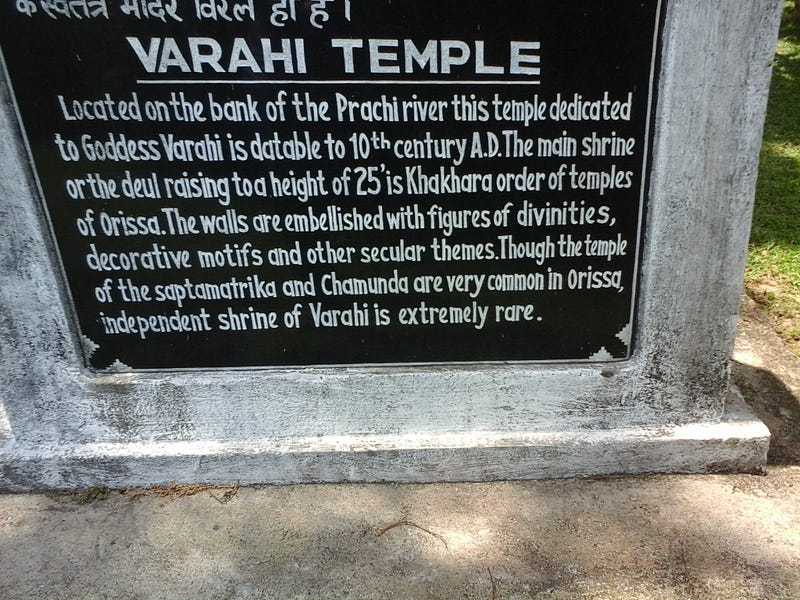

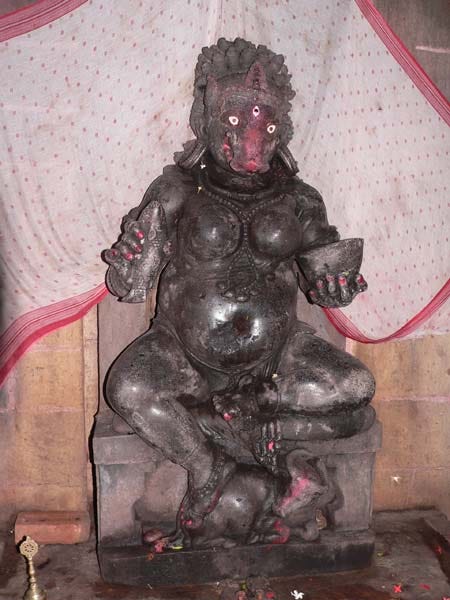
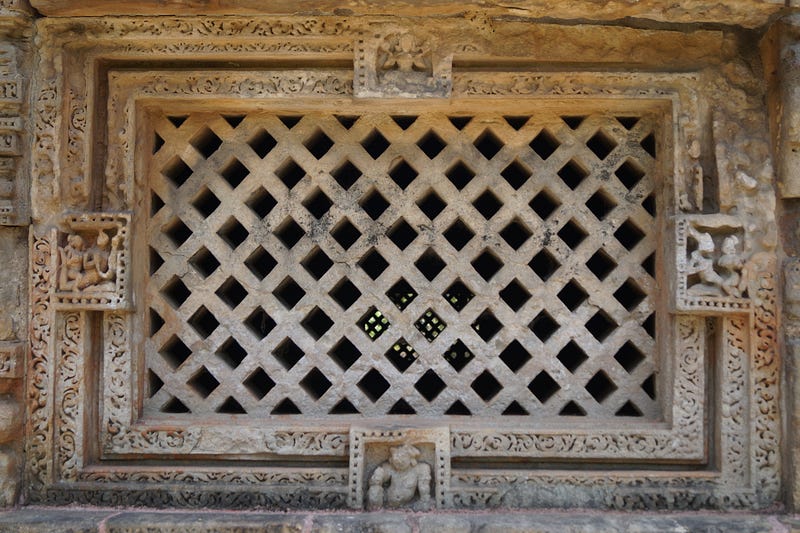

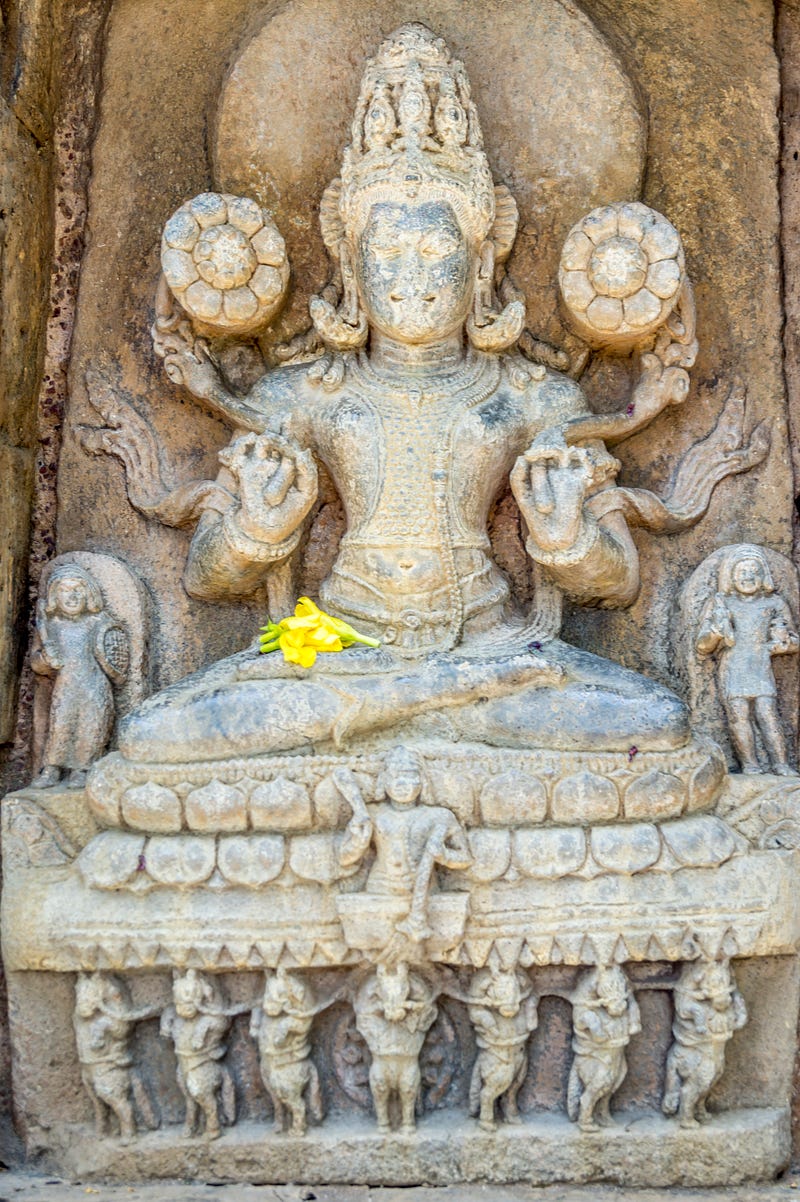



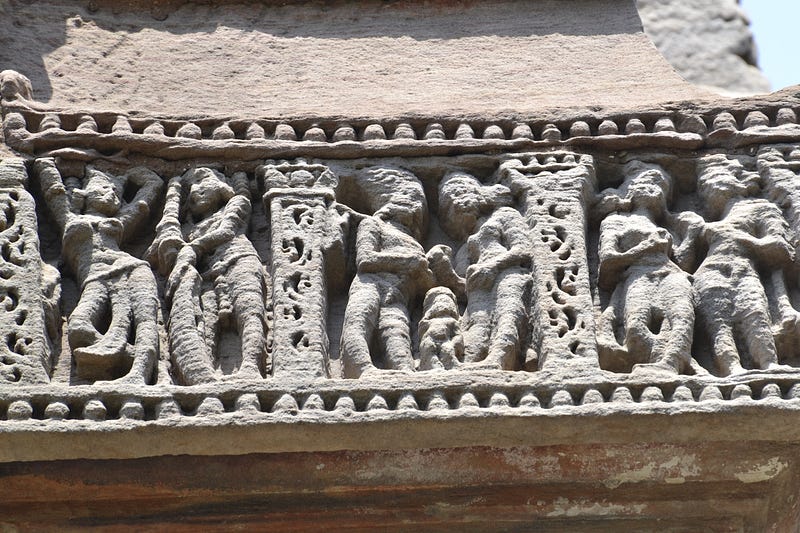

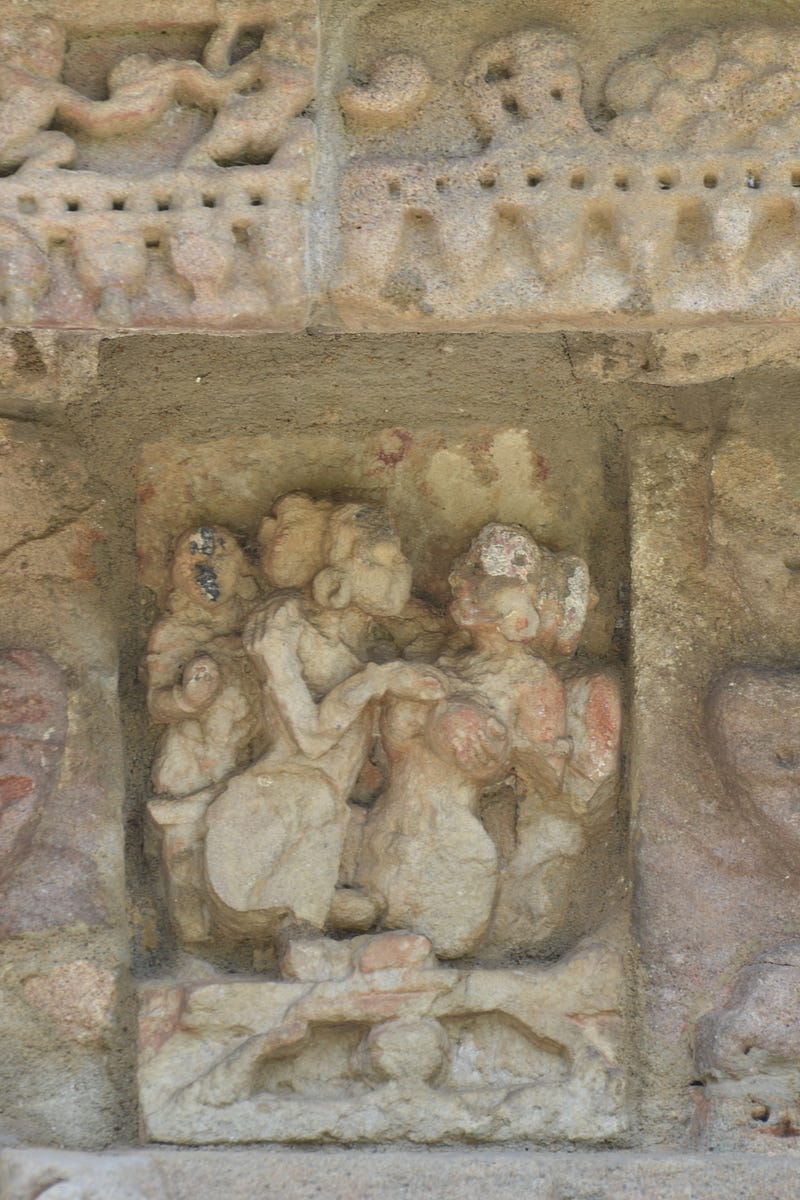
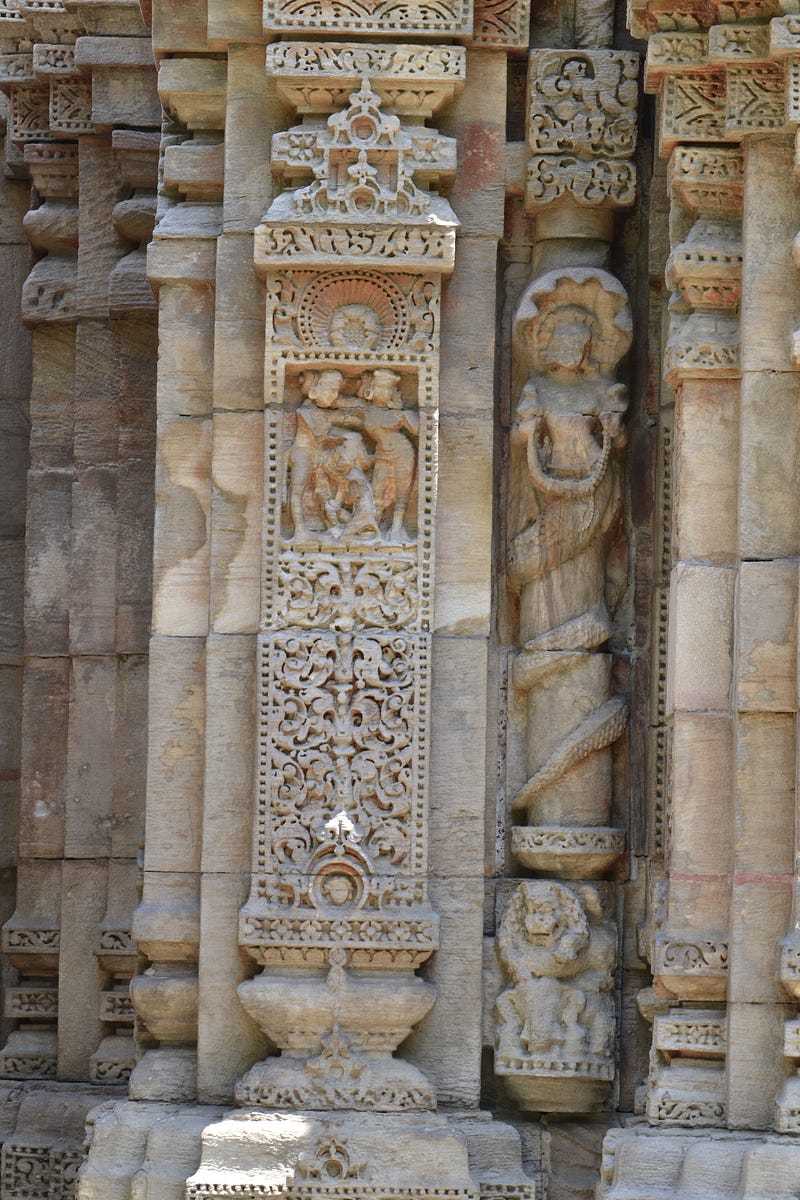
No comments:
Post a Comment